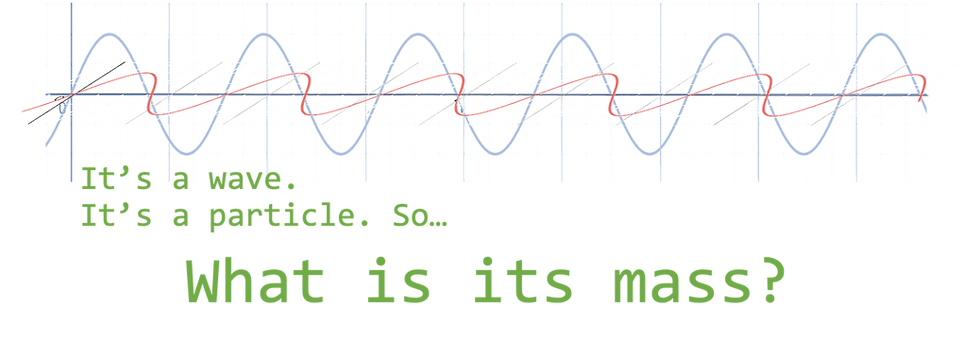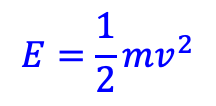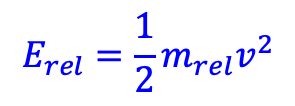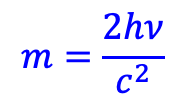This is a puzzle I just have to share! It is a question that has been on my mind for quite some time now.

Well, does this question even make sense? Can a wave, ripple, or any disturbance have any mass? Remember, matter, as well as photons, has a wave-particle duality. So, a photon can have mass in terms of being a particle! Of course, at rest a photon is massless, but at the speed of light (at which, tbh, you find all photons!), as we said before in the Time Travel posts, mega-weird things happen. To explore this, first of all, let's modify the Formula of Kinetic Energy from

(where E is the kinetic energy, m is the mass of the object, and v is the speed of the object) to

where (E_rel is the relativistic energy and m_rel is the relativistic mass). According to Einstein's theory of relativity:
The mass of an observer relative to X increases as the observer's speed relative to X increases.
The observer, however, notices no change in mass.
For the relativistic mass, there is another handy formula:

Here, m_rest is the mass of the observer to X when the observer is stationary to X. Notice the square root term from the Time Travel posts. Note also that at the speed of light, this square root term is 0. Therefore, for objects with non-zero rest mass, there is an infinite relativistic mass and thus an infinite kinetic energy of the object. Thus, objects with non-zero rest mass cannot travel at the speed of light. But what about objects with 0 rest mass such as a photon? Well, then we get an indeterminate form (0/0). And what do you know? I have now three counts of dividing zero by zero on my maths criminal record! This indeterminate form can take any value, presumably a value related to the energy supplied to the photon. We have a handy formula for this:

where E_gamma is the energy of the photon, h is Planck's constant and nu (looks like v) is the frequency of the photon. Now if we merge the two formulas we have together:

With some rearranging, we find that:

We thus discover that not only is the mass of a photon (at lightspeed) VERY VERY small, it actually depends on its frequency! A gamma ray would have more mass at the speed of light than a radio wave. But why do we care so much about the mass of a photon?
Well, one reason is that if we know the mass of a photon, although in undoubtedly vast quantities, we can use light to push objects! For example, the mass of a green photon is, by using the equation above, ~8.03 x 10^-36 kg. To provide a 1N force, we need to reflect ~2.08 x 10^26 green photons per second. Compared to the Sun's equivalent green photon output of 8.47 x 10^43 photons each second, that is nothing! With the Sun's total output, by reflecting this abundance of photons, we can exert a force of 4.07 x 10^17 N! This is similar to the weight of 10 trillion Asian elephants 🐘 !
Well, we considered a fun question and turned it into a surprising concept. If we are able to divert the Sun's energy (e.g. by means of a Dyson sphere[1] of mirrors), by reflecting photons, we can push anything (assuming that the object will absorb a negligible amount of the light)!
Please share your thoughts in the comments below and C u soon!
1: I will be writing about the design of a Dyson Sphere in a future post.
Comentarios